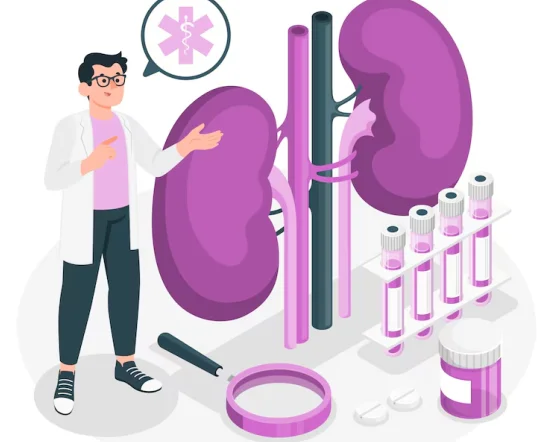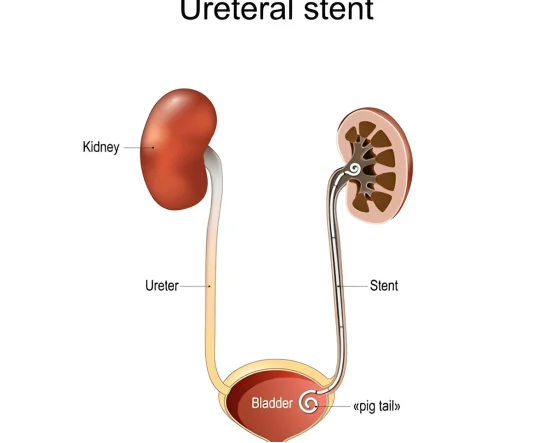Endourology has revolutionized the way urological diseases are diagnosed and treated. With the shift toward minimally invasive techniques, patients suffering from kidney stones, urinary tract obstruction, tumors, and other urological conditions now benefit from faster recovery, reduced complications, and greater precision.
Endourology represents a groundbreaking evolution in urological care. This advanced medical discipline focuses on the use of tiny scopes, lasers, and surgical instruments that are inserted through natural openings like the urethra, or via small incisions, to diagnose and treat urological problems with minimal trauma to the body. The result is a suite of treatments that are not only less painful but also far more efficient, with faster recovery times, fewer complications, and higher success rates.
What Is Endourology?
Endourology is a subspecialty of urology that focuses on the use of endoscopic techniques to diagnose and treat disorders of the urinary tract. These procedures involve the use of small cameras and instruments inserted through the natural urinary passageways or small surgical incisions, eliminating the need for open surgery in most cases.
This advanced approach is commonly used to treat conditions affecting the kidneys, ureters, bladder, and urethra. Endourologists can perform highly effective interventions such as stone removal, tumor resection, stricture treatment, and prostate procedures using minimal access techniques.
Common Conditions Treated by Endourology
Endourological procedures are effective in treating a variety of urological conditions. Some of the most commonly managed issues include :-
-
Kidney and ureteral stones
-
Ureteral strictures
-
Bladder tumors
-
Enlarged prostate (BPH)
-
Urinary tract obstructions
-
Ureteropelvic junction obstruction (UPJ obstruction)
-
Congenital abnormalities
The precision of endoscopic instruments allows for safe and efficient treatment, making it the preferred approach for many patients and urologists worldwide.
Treatment of Endourology
Endourology encompasses several techniques tailored to specific conditions. Here are the primary treatment methods used in endourological practice :-
-
Ureteroscopy (URS) :- Ureteroscopy is a procedure used to diagnose and treat problems in the ureters and kidneys. A thin, flexible tube called a ureteroscope is inserted through the urethra and bladder into the ureter. This allows the urologist to view and treat stones, tumors, or other abnormalities directly.
Ureteroscopic stone removal, including laser lithotripsy, is a common application. In laser lithotripsy, a laser fiber is used to break stones into tiny fragments that can be passed naturally or extracted.
-
Percutaneous Nephrolithotomy (PCNL) :- For large or complex kidney stones, PCNL is the preferred method. This procedure involves making a small incision in the back to access the kidney directly. A nephroscope is then used to remove or fragment the stones.
Although PCNL is slightly more invasive than ureteroscopy, it is still less traumatic than traditional open surgery and offers high success rates for treating large or multiple stones.
-
Transurethral Resection of Bladder Tumors (TURBT) :- TURBT is an endoscopic technique used for diagnosing and removing bladder tumors. A resectoscope is inserted through the urethra to remove cancerous or suspicious tissue from the bladder wall.
This procedure is essential for both staging and treating superficial bladder cancer. It typically requires a short hospital stay and has a quick recovery period.
-
Transurethral Resection of the Prostate (TURP) :- TURP is commonly performed for men with benign prostatic hyperplasia (BPH), or an enlarged prostate. The procedure involves trimming excess prostate tissue using an instrument passed through the urethra, relieving urinary obstruction and improving flow.
With advancements in technology, bipolar and laser assisted TURP options are now available, which offer even better safety and efficiency.
-
Laser Endourology :- Laser technologies such as Holmium:YAG and Thulium lasers have become integral in endourology. These lasers are used to vaporize or fragment stones, cut tissue precisely, and treat strictures or tumors with minimal damage to surrounding areas.
Laser treatment is particularly advantageous in stone disease and for precise resection in delicate regions of the urinary tract.
Benefits of Endourological Treatment
Endourology offers numerous benefits over traditional open surgeries :-
-
Minimally invasive :- Tiny incisions or natural access routes reduce trauma to the body.
-
Faster recovery :- Most patients can return home within a day or two, with minimal downtime.
-
Less pain :- Smaller surgical wounds mean significantly reduced postoperative discomfort.
-
Reduced complications :- Lower risk of infection, bleeding, or scarring.
-
High success rate :- Advanced imaging and technology allow for more accurate diagnosis and targeted treatment.
These advantages make endourological treatments suitable for a wide range of patients, including those with complex or recurrent urological issues.
What to Expect During an Endourological Procedure?
Most endourological procedures are performed under local, regional, or general anesthesia. Depending on the procedure type and complexity, they may be conducted on an outpatient basis or require a short hospital stay. Before the procedure, patients undergo imaging studies such as ultrasound, CT scan, or MRI to identify the problem accurately. The surgical approach is then planned accordingly.
During the procedure, a small endoscope is introduced through the urethra or via a tiny skin incision. Specialized instruments allow the surgeon to visualize, biopsy, remove stones, or resect abnormal tissue under direct vision. Recovery is usually quick, with minimal postoperative care. Most patients resume normal activities within a few days, depending on the nature of the procedure.
Is Endourology Safe?
Yes, endourology is considered very safe when performed by a trained urologist. With the continuous advancement in surgical instruments, imaging technology, and anesthesia techniques, the risk of complications is minimal.
However, as with any medical procedure, some risks may exist such as infection, bleeding, or injury to the urinary tract. These are rare and can often be managed effectively with prompt medical attention.
Choosing the Right Endourology Specialist
Selecting a skilled and experienced endourologist plays a critical role in the success of your treatment. Look for a urologist who :-
-
Specializes in endourological procedures
-
Has access to modern facilities and surgical technology
-
Offers a comprehensive diagnosis and personalized treatment plan
-
Has good patient reviews and outcomes
In many cases, multispecialty hospitals and urology centers offer complete care, from diagnosis to post procedure follow up.
Conclusion
Endourology has opened up a new era of precision, efficiency, and safety in the treatment of urological disorders. From kidney stones to prostate enlargement and bladder tumors, endourological techniques offer patients faster relief and better outcomes with minimal intervention.























